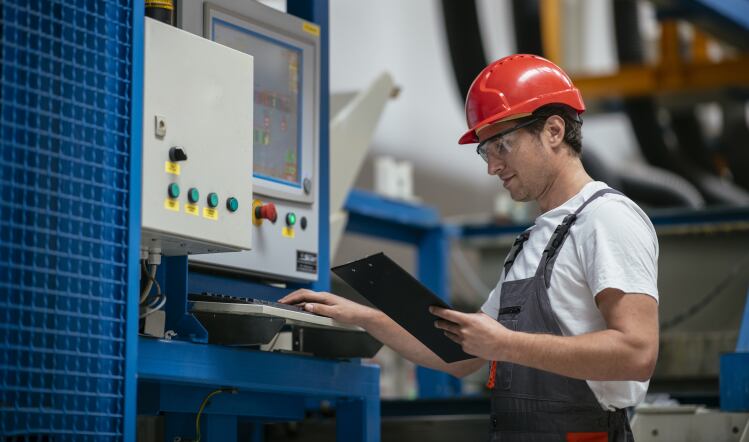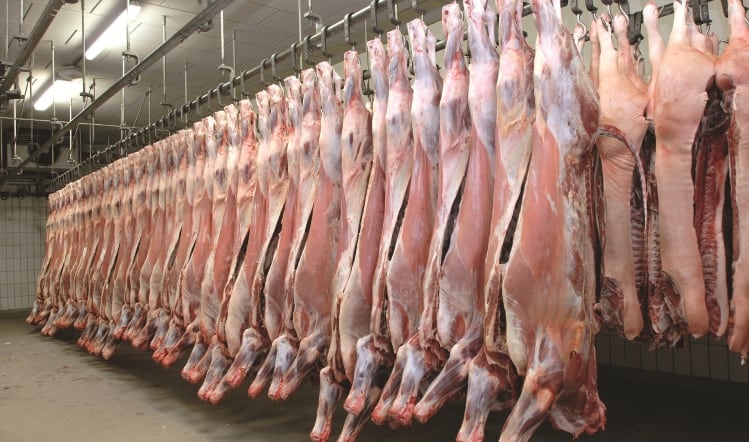The world of maintenance in food and drink manufacture is trans-forming in such a way that many traditional techniques are being consigned to the dustbin of history.
Where once reactive breakdown maintenance was the norm, today, it’s all about preventative maintenance – particularly for critical items of plant where downtime would prove very costly.
Here, planned maintenance techniques are being superseded by predictive maintenance, using condition-based monitoring of sensors on machinery.
However, that’s just part of the journey. Soon, the primary focus of preventative maintenance will shift towards root cause failure analysis, where real-time digital technology and artificial intelligence (AI) are used to crunch vast amounts of information and identify the real causes of problems in equipment. Given the considerable benefits this is likely to bring to day-to-day operations, manufacturers would be wise to move with the times.
The approach, combined with the expertise of skilled people who intimately understand the processes, will effectively enable faults to be “designed out”, says Keith Thornhill, head of food and beverage for UK & Ireland at control and automation specialist Siemens. It will also help identify opportunities for process improvements that will further add to the bottom line, he suggests.
‘Predicting the unpredictable’
“It’s about predicting the unpredictable,” says Thornhill. “Where things are moving now is the complicated area of trying to really understand root cause analysis and understanding what is causing problems.”
This will enable limited resources to be more carefully targeted and “point solutions” applied. It will lead to problems being designed out and, eventually, wider process efficiencies to be made in a way that optimises return on investment, he adds.
“Measurement is really important, and the discussion is how do we measure more efficiently and how do we start to measure something in the benchmark for continuous improvement?” says Thornhill. He adds that AI can be used to “trend data” that leads to equipment failure. This also helps to identify areas for making process improvements.
“People get hung up with digital and the Internet of Things,” says Thornhill. “But, I say, don’t get hung up on the terminology, just use the technology to continuously improve and that’s all you’ve got to worry about.”
Progress is being helped by the development of advanced low-cost sensor technologies, using vibration monitoring on essential items of rotating equipment such as bearings; or thermographic imaging techniques, supported by oil analysis to detect excessive wear. These are combined
with sophisticated data handling and analysis techniques to determine where attention needs to be focused. “Because, generally, what fails isn’t the root cause,” warns Thornhill. “It is the output of some other problem.”
Designing out failures
One company that provides a way of designing out equipment failures is NSK, which offers moulded bearings as replacements on food processing machinery containing bearings exposed to challenging conditions, such as frequent wash-out with water, steam and/or high-pressure water jets.

One large unnamed bakery in the European Union recently overcame the problem of repeated failures on integral blade saw pulleys in its cake-cutting machines by replacing the bearings with NSK’s Molded-Oil variety. This has claimed to have reduced maintenance costs and increased productivity, while saving about €9,400 (£8,250) a year.
Another manufacturer of frozen pizzas also overcame a problem of failures every four weeks on a belt tensioner serving one of its food conveyors through a similar approach. Changing to NSK’s Molded-Oil bearings has prolonged operating life and provided annual cost savings of €15,360 (£13,490).
“Most of the food and beverage industry over the last 10 to 20 years has been in reactive maintenance,” says Lee McFarland, technical director for asset management at AVT Reliability, a specialist in vibration monitoring. It’s a culture that almost encourages breakdowns and one that needs to change, he believes. “Changing culture is the biggest challenge, it’s not the technology.”
All the major control and automation suppliers are developing advanced approaches to asset care in the food and drink sector, making use of the capabilities of smart sensors on equipment and production lines linked via programmable logic controllers to high level manufacturing execution systems and enterprise resource planning systems.
Of course, such reliability-centred maintenance techniques for asset care only make sense for use with the most critical areas of operations. Ensuring sufficient spares are at hand or readily available to replace non-critical items of plant still makes more sense in many instances.
To this end, earlier this year, German food processing equipment supplier GEA introduced its new GEA Service Kit concept for packaging and forming machines, which is claimed to make maintenance more convenient and easier to plan. The kits ensure that service personnel always have the spare parts they require when they need them for maintenance.
Switch to digital
However, for areas considered critical, the emergence of Industry 4.0 is enabling manufacturing cells to be linked digitally to record maintenance data. Despite this, many firms still make use of paper-based record-keeping, says Gernut van Laak, group automation solutions leader of ABB’s Food and Beverage Programme.
“Today’s maintenance engineers have the computing knowledge to make the switch to digital,” says van Laak. “Providing them with a familiar interface that quickly connects employees across the organisation allows staff to work faster and smarter, increasing productivity. Electronic records also eliminate time-consuming and error-prone data entries that are necessary with paper-based systems.
“Giving maintenance staff access to electronic devices on the factory floor allows them to input data faster and gives them more time to spend completing maintenance tasks.”
With robots an increasingly common feature of food and drink manufacturing operations and technical expertise in short supply, Mitsubishi Electric’s latest cloud-based predictive maintenance system could prove invaluable.
It is supported by the AI platform within IBM Watson and implemented with voice control and ‘augmented reality’ features to facilitate human interaction with the robots. This interconnected, intelligent system is claimed to help maximise responsiveness, productivity and plant control while reducing costs and downtime.
“In the future, making sure the physical machinery stays up will still be important,” says Thornhill at Siemens. “But, certainly for the food industry, where a lot of time and effort will go is in really understanding and controlling the variability of processes.”
Training in lubricant use

As food-grade lubricants become more widespread, knowledge about the best types of lubricant to use in different scenarios is critical.
To meet this need, a certified lubricant training course designed to improve industrial operational efficiency and reduce costs has been developed.
LubInstitute, from Total Lubricants, is aimed at a range of professionals, including lubrication and maintenance managers, condition monitoring specialists, operations managers, plant managers, and individuals involved in purchasing, stocking and dispensing lubricants.
The tailored and interactive training course is delivered in person by Total Lubricants’ technical experts and supported by a dedicated e-learning platform. It contains a foundation module focusing on lubricants’ composition, application and issues related to their use that can be tailored to participants’ varying levels of understanding.
The foundation module is followed by a selection of tailored modules, including common machine lubrication, turbine lubrication, food-safe and biodegradable lubricants, advanced troubleshooting, stocking and handling lubricants, bearing lubrication, oil condition monitoring and metalworking.
“The LubInstitute course is aimed at anyone working with lubricants who wants to keep their machinery operating at optimum efficiency, while reducing costs and developing best practice,” says Total Lubricants’ technical key account manager Gautier Perrin.




